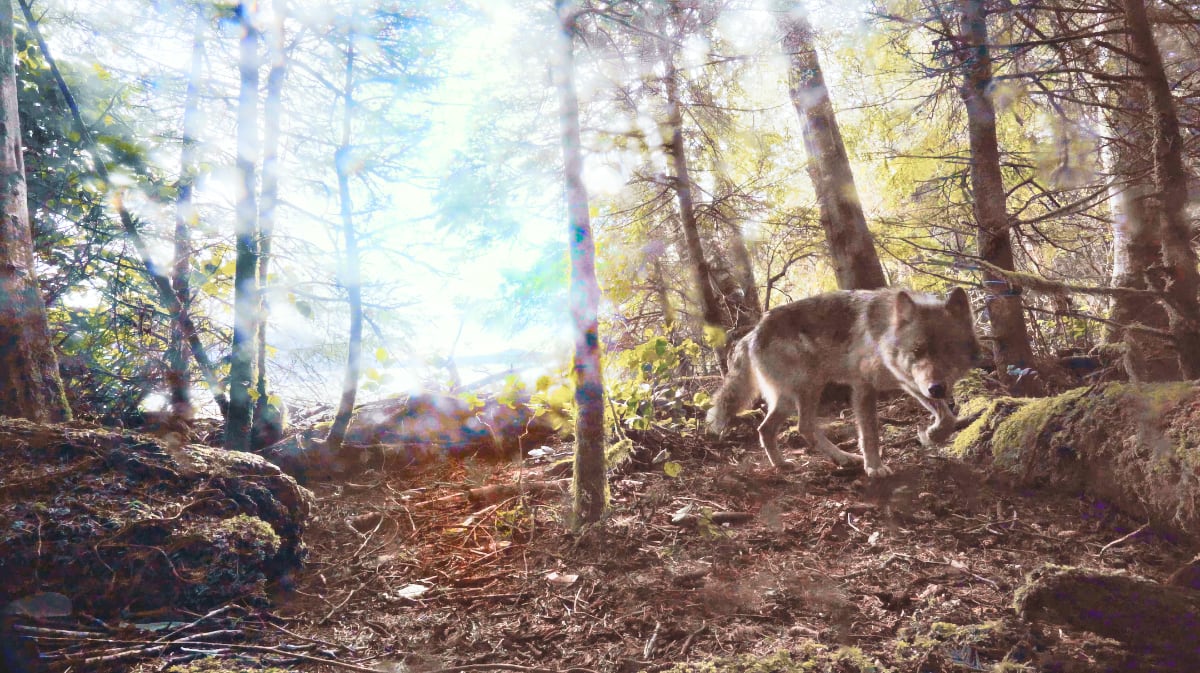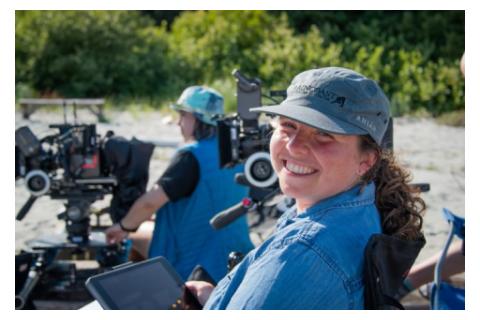
Modernization
Learn more about government’s intention to modernize the museum to protect our historic holdings and provide better access to our collections.

by Laura Goldstein
Photos: Sam Rose Phillips
Marcie Callewaert

Filmmaker, photographer, ethical storyteller Sam Rose Phillips is crouched in dense forest undergrowth among trees as much as 1000 -years-old on an undisclosed island off the British Columbia coast. She’s the lead in a five-woman documentary film crew setting up remote cameras that will film grey wolves (also known as sea wolves,) over the next year.
As the first speaker in By Design: A Journey Through Arts and Culture Talk Series, Sam will discuss how awareness of ethical principals has affected and propelled her life’s work. And, most recently, directing and producing her first feature-length documentary on a community co-existing with wolves. In partnership with the National Film Board of Canada and seal folk films, she’ll integrate story-telling with behind-the-scenes footage and a sneak preview clip from her new doc, Friday February 14th Conference Hall at the Royal BC Museum, Victoria.
For over ten years, Sam has produced short documentaries on wildlife co-existence including the rescue of a transient orca, always in partnership with the communities they inhabit. She spent seven months with the Sea Shepherd Conservation Society in the Caribbean documenting relief efforts following the devastation from Hurricanes Irma and Maria. Sam conducts workshops and young people’s mentorships and expresses her love of the land and sea writing heartfelt poetry.
Hollywood in many cases, has demonized wild animals sensationalizing attacks by wolves and grizzly bears. Think about the wolf eating grandma in the fairytale, Little Red Riding Hood by the Brothers Grimm. And that’s engrained in childhood! Sam presents another side: “I’m really excited about talking about a different way to look at photographs in terms of ethics in tandem with the Royal BC Museum’s Wildlife Photographer of the Year Exhibition. We shouldn’t feel entitled to see wildlife up close,” she says of tourists who perilously don’t keep their distance.
Taking a water taxi from her home base in Ucluelet to a remote location in Yuułuʔiłʔatḥ territory (pronounced Nuu-chah-nulth,) the team often camped out but sheltered in a cabin during inclement weather over twelve days. The documentary, entitled QʷAYAĆIIK meaning ‘Wolf’ in Nuu-chah-nulth, revolves around a couple - one Indigenous the other of European ancestry and how they co-exist with wolves among human-wolf conflict in the community-led project.

“Our remote camera system is set up in forests and near beaches, always with the first priority being to minimize any impact on wolves,” Sam clarifies. “This includes avoiding sensitive areas such as den sites.”
Educating the public is key to developing respect for wildlife. “Using social media can be misleading and a source of disinformation,” Sam explains. “I urge people to read between the lines when looking at photos. They often don’t include context of where photos came from or how they were obtained. ”On the positive side Sam says, “We’re really ahead of the curve here in BC as Parks Canada, working with Nuu-chah-nulth elders, developed a programme entitled, ‘Wild About Wolves’ that seeks to educate the public on safe co-existence.”
“In order to tell a story about wolves I don’t need to harm them. In QʷAYAĆIIK, we’re trying to strike a balance: we don’t need to love them to death or fear them to death but respect them so that we can co-exist.”